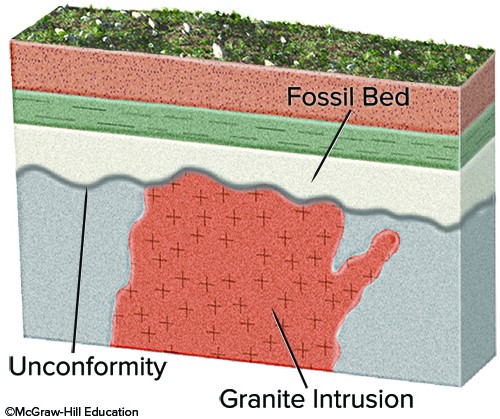What would fossil ages from the geologic timescale and an isotopic age on the granite tell us about the age of the unconformity?
A. It is not possible to have fossils preserved so close to granite.
B. The unconformity is older than the age assigned to the fossils.
C. The granite is younger than the unconformity.
D. The unconformity is older than the isotopic age of the granite.
E. None of these choices are correct.
Answer: B
You might also like to view...
Solar cookers could replace ________ as an affordable source of energy in rural villages in third world countries
A) natural gas B) nuclear power C) fusion power D) fire wood
In a volume of air near Earth's surface today, ____ occupies 78 percent and ____ nearly 21 percent
a. ?nitrogen; oxygen b. ?hydrogen; oxygen c. ?oxygen; hydrogen d. ?nitrogen; water vapor e. ?hydrogen; helium
Compared to oceanic crust, continental crust is thicker and less dense
Indicate whether the statement is true or false
In terms of dating of specific rocks, structures, or landscapes, absolute age refers to
A) a range of numeric values in which features were likely formed and based on several lines of evidence, such as paleoclimatic and paleobotanical reconstructions. B) the age of one feature with respect to another within a sequence of events and deduced from the positions of rock strata above and below one another. C) the age of geological features based on radiometric dating techniques. D) the approximate age of geological features based on the period or epoch in which they occurred. For instance, noting a feature is from the Cretaceous. E) historical records from the earliest modern humans that recorded when the rocks and structures were formed.